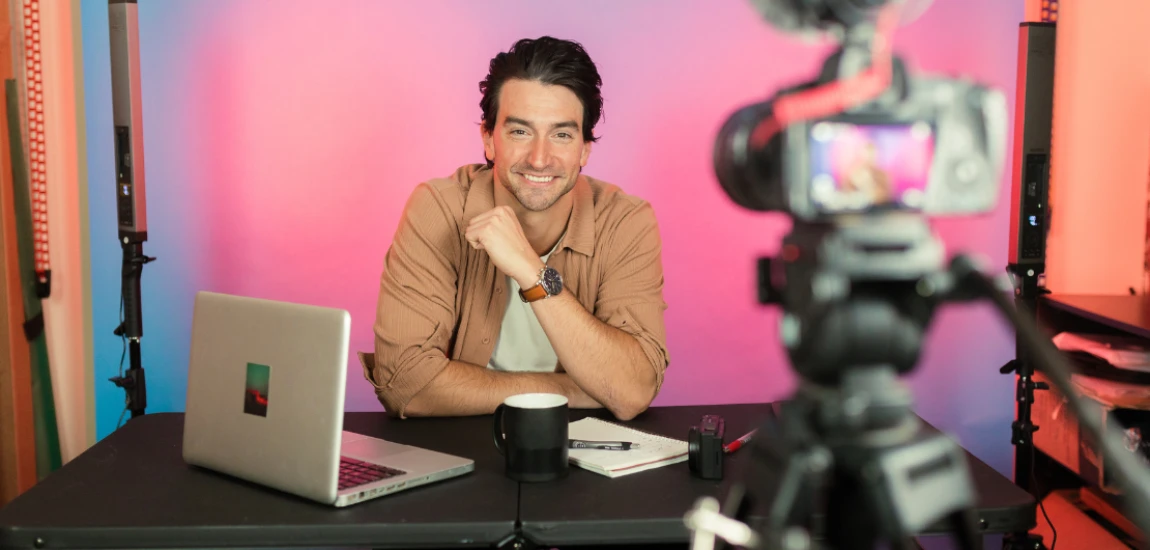AI Influencers 2.0: When Virtual Personalities Get Cancelled

In today’s digital-first world, the concept of “influencer” has evolved far beyond a selfie-taking human on Instagram. Enter the era of AI influencers — virtual personalities, digitally generated personas that operate as brand ambassadors, social media stars, and cultural “faces” of campaigns. These entities exist only in pixels, code and design, yet command real-world followings and brand deals. As one recent overview notes: “Digital personalities built from pixels and algorithms now command audiences of millions.”
ubertrends.com
+2
zoomsphere.com
+2
But as with all influencer marketing, power comes with risk. And in this case, a new form of risk emerges: what happens when a virtual personality gets “cancelled”? While it’s one thing for a human influencer to misstep, apologize, evolve and attempt redemption, the dynamics shift significantly when the influencer is a programmed avatar. The “cancellation” of a virtual personality raises questions about authenticity, narrative control, trust, and ethics in unprecedented ways.
In this blog post, we’ll dive into what AI influencers are, why they’re popular, how they can be “cancelled,” and what brands, creators and audiences should keep in mind. Along the way we’ll unpack actionable insights, pitfalls and future implications. Whether you’re in marketing, content creation, or just curious about the evolution of digital culture, there’s much to unpack.
What Are AI Influencers?

Defining Virtual Personalities
“AI influencers” are computer-generated or digitally designed personalities created to act like social media influencers. They often have back-stories, visual identities, and operate across platforms like Instagram, TikTok, YouTube. For example, the avatar Lil Miquela (aka Miquela) is a fictional character created in 2016 who appears as a Brazilian-American model and singer.
Wikipedia
+2
protunesone.com
+2
They partner with brands, post content, and engage audiences just like a human influencer.
How They Are Created and Operated
Behind the scenes, AI influencers are crafted using technologies like CGI (computer-generated imagery), 3D modelling, motion-capture, natural-language generation, and social-media content scheduling. One article notes they “exist exclusively in digital environments while functioning as social media stars”.
ubertrends.com
+1
Teams of designers, writers and marketers build their personas, their content calendar, and manage audience interactions.
Why They’ve Gained Traction
Brands find appeal in virtual influencers for several reasons: cost-efficiency (no travel, no physical model logistics), consistency (the avatar doesn’t age, sleep or go off-brief), and high engagement rates in some cases — one study reported virtual influencers averaging 5.9% engagement vs human influencers around 1.9%.
zoomsphere.com
+1
They also offer novelty: the “wow” effect of a digital star can draw attention and curiosity. But as we’ll see, the same factors that make them appealing also sow seeds of risk.
Why Brands Are Embracing AI Influencers

Cost, Control & Scalability
From a brand perspective, AI influencers offer an appealing mix: you can control every post, align the persona with your brand story, and scale across global markets with minimal logistic friction. As one source points out: “Virtual influencers are reshaping marketing—cheaper, scandal-free, and always online.”
zoomsphere.com
The savings on talent fees, location shoots, and contract renewals can be substantial.
Engagement and Novelty Advantage
The novelty factor plays a big role. Audiences are curious about avatars that blur the line between real and virtual. That curiosity can drive initial high engagement. One guide notes that curiosity might account for the higher engagement rates of virtual influencers in some niches.
Zebracat
+1
Strategic Fit for Certain Campaign Types
Virtual personalities work especially well when the campaign is visual, aesthetic-driven, or global in scope. For fashion, tech, luxury brands where the “experience” is stylised and less about lived human testimony, an avatar can be effective. But that doesn’t mean they’re right for every brand — and that leads into the next sections.
The Rise of Cancellation for Virtual Personalities

What Does “Cancellation” Mean when the Influencer is Virtual?
With human influencers, cancellation often stems from a misstep, offensive comment, scandal, or breach of audience trust. With a virtual influencer, the dynamics change: cancellation could mean the brand pulls the campaign, the avatar’s persona is shut down, the audience feels misled and unfollows, or the digital personality loses credibility. As one article summarizes: “For virtual influencers, cancelled can mean … campaigns halted, personas shut down, the avatar loses credibility.”
lifeblogs.org
+1
Why Virtual Personalities Are Vulnerable
Despite their digital nature, virtual influencers are still vulnerable to backlash because they’re built to mimic human behaviour and emotion. When audiences sense inauthenticity, discover the persona is purely manufactured, or see a mismatch between messaging and reality, trust erodes. One commentary warns: transparency issues and the gap between how the avatar appears versus what they can actually deliver are key risks.
lifeblogs.org
Triggers for Cancellation
Typical triggers include:
The avatar posts or endorses something misaligned with brand values or cultural norms.
Unclear disclosure about the avatar’s virtual nature leads to perceptions of deception.
Technical or narrative “glitches” that make the persona appear unrealistic or manipulative.
Over-promise or false authenticity — e.g., promoting a product as though the avatar personally used it when they'd never physically could. These triggers are especially potent given the thin margin for error when credibility is built on illusion.
Authenticity & Trust: The Core of the Debate

Why Authenticity Still Matters
Despite the slick visuals and novel appeal of AI influencers, influencer marketing fundamentally rests on trust: a follower believes that the influencer genuinely uses, recommends or at least aligns with the product or message. With virtual influencers, this is often impossible: the avatar didn’t physically try the product, doesn’t have lived experience, and cannot provide first-hand testimonial in the human sense. One source states: “They can’t actually experience what they promote.”
lifeblogs.org
+1
How Brands and Creators Try to Simulate Authenticity
In response, creators of AI influencers often craft backstories, “day in the life” content, Q&A sessions, user engagement and other tactics to make the persona feel “real”. For example, the avatar may post about hobbies, feelings, travel — all to build a sense of personality and depth. But importantly, this is still constructed narrative, and audiences may feel uneasy when they realize how much is scripted.
The Trust Gap: When Audiences Feel Deceived
If the audience realizes that the virtual personality is not fully transparent about their nature — for example if the avatar is portrayed as a “real person” without clear disclosure — the trust gap widens. Some consumers report discomfort or skepticism: in one survey, 65% of U.S. consumers said they were unlikely to buy products promoted by AI influencers despite the high engagement numbers.
Zebracat
The moment the illusion shifts from creative novelty to perceived deception, cancellation risk escalates. Virtual personalities stand or fall on trust, and their margin for error is arguably lower than for human influencers.
Ethics, Disclosure & Regulation in the AI Influencer Space

Disclosure and Transparency Requirements
Just as human influencers must disclose paid endorsements, virtual influencers face evolving requirements around transparency. Fans and regulators increasingly expect that the avatar’s nature, the fact that the persona is digitally designed and that posts are paid or sponsored, be clearly communicated. As one article puts it: “The ethical and legal frameworks around virtual influencers are still unsettled.”
lifeblogs.org
Ethical Dilemmas Unique to Virtual Personalities
Several ethical issues arise:
Manipulation of Audiences: When the virtual influencer might be perceived as a “real person,” is the audience being misled?
Representation and Cultural Sensitivity: Virtual characters may replicate or appropriate race, gender, culture in problematic ways — for example a white creator designing a Black-looking avatar.
lifeblogs.org
Job Displacement: Some argue that virtual influencers may reduce opportunities for human creators.
Zebracat
Unrealistic Standards: These avatars often embody flawless beauty, extreme polish — potentially raising issues around body image and authenticity.
Regulation and Where We Stand
Currently, regulation is patchy and evolving. Some jurisdictions enforce clear disclosure of sponsored content, but what counts as a “virtual influencer” and how the rules apply is less clear. One academic study on virtual influencer perception notes that international regulatory frameworks are still catching up.
ScienceDirect
For brands and marketers this means operating proactively: assume audiences will demand more transparency, and that reputational risk is real even if the influencer is virtual.
Case Studies: When Virtual Influencers Faced Backlash

Example: Lil Miquela’s Controversy
As one of the most visible virtual personalities, Lil Miquela (Miquela) has had her share of controversy. According to her Wikipedia entry, after she posted a “sexual assault” vlog, human creators criticized the move as “ignorantly offensive” because the fictional character’s experience was essentially scripted for marketing narrative.
Wikipedia
The backlash demonstrates how audiences can push back when the lines between fiction and reality feel exploitative rather than entertaining.
Example: Representation Issues with Shudu Gram
The avatar Shudu Gram, cited as the world’s first digital supermodel, sparked debate because although she was portrayed as a Black model, she was created by a white photographer, raising concerns about appropriation and representation.
Wikipedia
Although not branded as a “cancellation” in the traditional sense, it illustrates how virtual influencers can face reputational risk when audiences raise questions about origin, identity and agency.
Lessons from These Cases
From these examples we learn that:
Virtual influencers are not immune to public scrutiny or social values.
The narrative around them matters: when an avatar is used to simulate a human experience (like trauma, lifestyle), audiences may feel manipulated.
Brand alignment, creator transparency and social sensitivity are essential — if one of these fails, the risk of “cancellation” (or de-platforming, collapse of trust) becomes real.
How to Mitigate Cancellation Risk for AI Influencer Campaigns

Align Values and Story-telling
When launching a virtual influencer campaign, ensure that the persona’s identity, voice, and narrative align with your brand’s values and your audience’s values. Don’t treat the avatar as a gimmick — instead integrate them into genuine storytelling that makes sense for the brand, product and audience.
Maintain Transparency and Authenticity
Even though the personality is virtual, best practice is to clearly disclose that fact. Make it part of the persona’s narrative: “I’m a digital avatar created by XYZ.” Encourage interactive authenticity: Q&A sessions, behind-the-scenes of creation, user-generated content involving the avatar. These steps build trust rather than hide the artifice.
Choose the Right Fit — Product & Audience Match
Virtual influencers may work better for visual, aesthetic, fashion and entertainment campaigns than for industries where lived experience is central (e.g., health, wellness, personal journeys). If your product demands real human experience and testimony, a virtual persona might feel disconnected or even manipulative. The earlier source points out: “If your audience is obsessed with authenticity, AI influencers won’t cut it.”
zoomsphere.com
+1
Build Contingency Plans & Governance
Given the potential for backlash, plan ahead: define governance around what the avatar can say/post, ensure a review process, monitor audience sentiment in real time, and prepare for negative feedback (just as you would when using human influencers). Because the persona is virtual, removal or shut-down may be easier — but the reputational damage may still ripple.
Monitor Trust, Engagement & Sentiment
Don’t just track likes, shares and follower counts. Track comments, sentiment, trust metrics. If you notice an uptick in backlash or skepticism (“Is this real?” “I feel misled”), act swiftly. The faster you respond, the less risk of a full-blown “cancel” scenario.
Innovate While Remaining Ethical
Use the novelty of virtual influencers thoughtfully, not purely for shock or click-bait. When the avatar offers value — entertainment, education, inspiration — you mitigate the sense of “we’re tricking you” and instead build a community that enjoys the fiction and accepts the digital nature.
Future Trends and What to Watch for in the AI Influencer Space

Integration with Metaverse, AR/VR & Real-Time Interaction
Virtual influencers are evolving beyond static posts — into immersive experiences. Some are entering augmented reality (AR) / virtual reality (VR) spaces, engaging audiences in real time, appearing at virtual events, interacting via chatbots. This deepens the “presence” of the avatar but also raises fresh authenticity and trust questions.
ubertrends.com
+1
Hybrid Human-AI Influencer Models
We’ll likely see more collaborations between human influencers and virtual avatars: the human brings lived experience, the avatar brings novelty and scalability. This hybrid model can leverage strengths of both while hedging against the unique risks of fully virtual personalities.
Increased Regulation & Standards
Given the growing scale of virtual influencer campaigns, expect more formal regulation: clearer disclosure requirements, industry guidelines around representation, transparency about origins and sponsorships. One academic article flagged that perception of virtual influencers differs across cultures and that regulation is still “lagging.”
ScienceDirect
Audience Fatigue & Authenticity Pushback
As novelty wears off, audiences may become more skeptical of virtual influencers. The trust gap may widen if consumers begin seeing these avatars as gimmicks rather than meaningful voices. Brand strategies will need to shift from just “cool digital face” to “value-driven presence.”
Ethical Innovation as Competitive Advantage
Brands and creators that embed ethical design, diverse representation, transparent narratives and meaningful engagement will differentiate themselves in a crowded space. The “cancellation risk” will favour those who have built credibility from the start.
Actionable Tips for Brands, Creators & Audiences

For Brands and Marketers
Audit your campaign: ask “Does this avatar make sense for the product, the audience, the story?”
Integrate transparency: state upfront that your influencer is virtual; include “avatar” or “digital persona” in the bio.
Monitor sentiment: set up listening tools, track trust signals, act fast if backlash appears.
Build layered content: incorporate behind-the-scenes, user interaction, and genuine community-building — not just slick posts.
Have a crisis plan: even virtual personalities can damage brand reputation; plan for responsiveness, apology scripts, and pivot options.
For Creators and Influencer Agencies
If you’re managing virtual personalities, maintain consistency in persona, narrative and values. Sloppy updates or shifting identity confuse audiences and amplify risk.
Ensure diversity and fair representation: avoid designing avatars that reinforce harmful stereotypes or appropriate culture without context.
Use virtual personas where they offer clear value — novelty, scale, aesthetics — but align with human creators where authenticity and lived-experience matter.
For Audiences and Consumers
Be mindful: follow with understanding. Know when a persona is virtual and consider what you expect from it (entertainment? inspiration? review?).
Demand transparency: when social media posts show virtual influencers, you’re within your rights to ask “Who’s behind this? Is this genuinely representative?”
Consider trust and intent: When someone (virtual or human) promotes a product, think about whether they genuinely used it, stand behind it, and align with your values.




